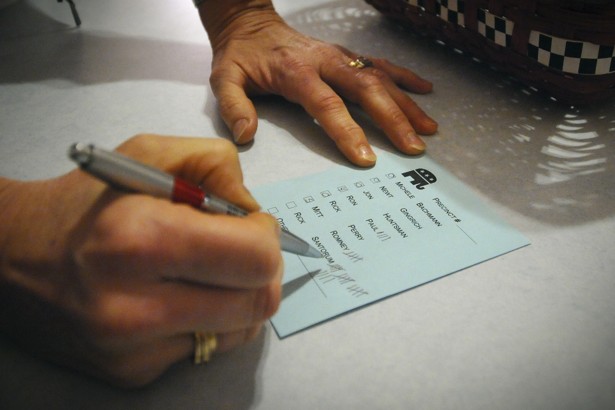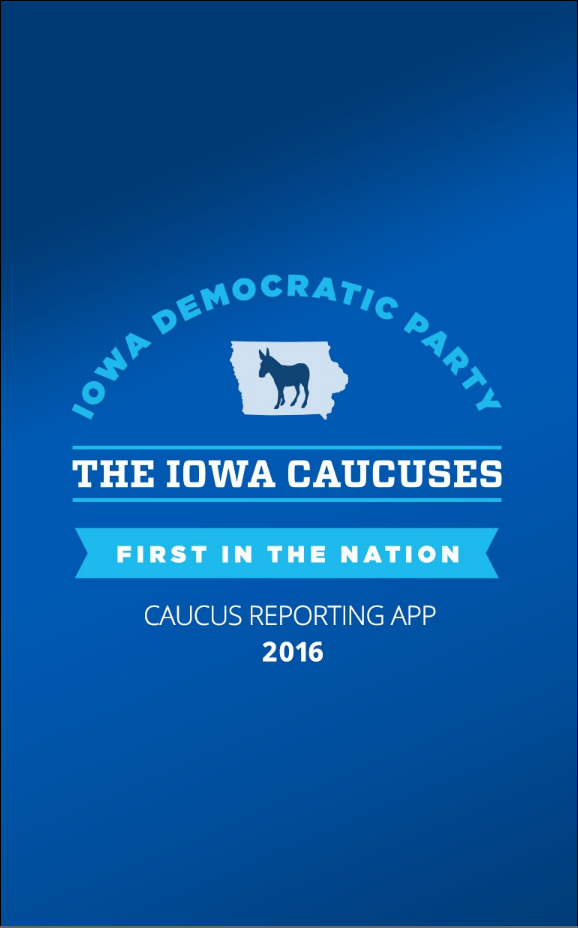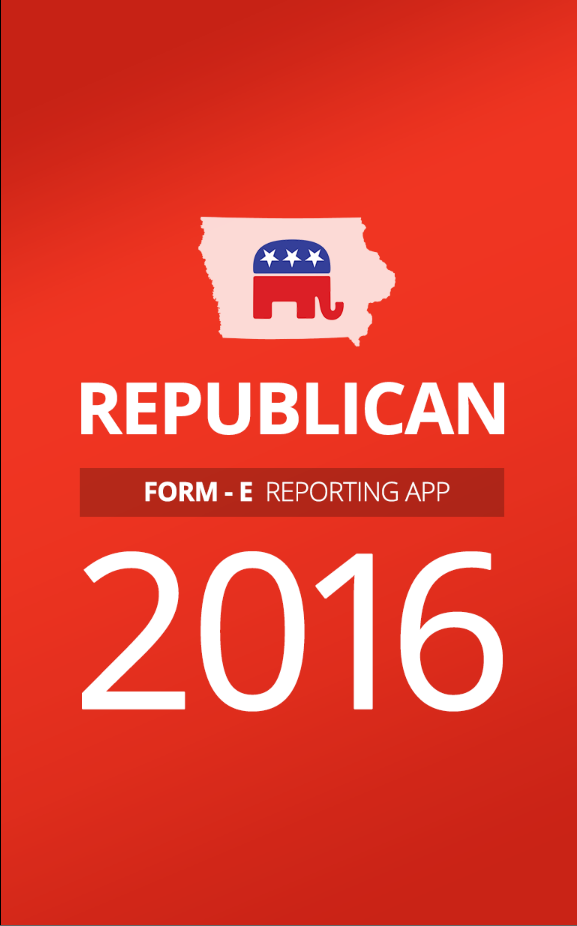
Caucus Night 2012 was not exactly a banner evening for the Republican Party of Iowa.
Reporting problems plagued the vote-counting during the crucial first-in-the-nation presidential contest. The initial headlines credited frontrunner Mitt Romney with the narrowest of victories over Rick Santorum, by a mere eight votes out of more than 100,000 cast. When the state party certified the results of the election more than two weeks later, however, it declared Santorum the official winner by 34 votes. Yet Republican officials had already acknowledged the embarrassing truth: Because of inaccuracies in dozens of precincts and missing results from eight of them, the real victor of the Iowa caucus would never be known for certain.
Needless to say, the Iowa GOP would like to have a smoother—and more accurate—election on February 1. So would Iowa Democrats, who are running their first competitive caucus in the state since 2008 and whose process for nominating a presidential candidate is even more complicated than the one Republicans use. Both parties are pinning their hopes on new technology, betting that a custom-designed mobile platform can modernize a quirky voting method and ensure the public knows which candidates won Iowa long before voters head to the polls in New Hampshire. The idea is to meld “a brand-new technology and a 100-year-old process,” said Stan Freck, senior director for campaigns and elections at Microsoft, which partnered with the parties on the project.
It bears repeating that caucuses are not like traditional primary or general elections—there are no voting booths or machines, and there is nothing really automated about them at all. At 7 p.m. local time on February 1, voters in each party’s 1,681 precincts will sign in at one of nearly 700 locations across the state. The Republicans keep it pretty simple: After representatives for each candidate make brief presentations, the voters write the name of their preferred nominee on a slip of paper, the ballots are counted, the winner for each precinct is announced, and the tallies are reported to party headquarters.
Democrats, by contrast, hold their caucuses entirely out in the open and add an extra layer of complexity. Rather than cast ballots, voters declare their support for a candidate by gathering in one corner of the room to be counted. If any candidates fail to reach a pre-set viability threshold, their supporters are up for grabs, and rivals work to persuade them to join their side for the next tally.
In the past few caucuses, precinct captains in each party have reported the results through a touchtone phone system, which worked quickly enough but had been “prone to errors,” said Charlie Szold, spokesman for the Iowa GOP. “People with inartful fingers would hit the same key multiple times accidentally and lead to results that were skewed,” he said.
The key features of the app designed by Microsoft and its partner, Interknowlogy, are backstops for clumsy-fingered or tech-challenged precinct captains. “It’s a simple, big-button kind of interface, not a lot of crazy stuff on the screen,” Freck said. “The idea was to have a simple interface that almost anyone can use without getting too lost.” A demo confirmed his description; a precinct captain only has to go through a couple of screens after logging in, and the whole process should take no more than a few minutes. (As a security check, each precinct captain will only be able to log in for 15 minutes.)

The app works on phones running iOS, Android, and Windows, and captains will log in to their own phones with unique codes—two-step verification, of course—at the end of their caucus. The app is designed so it can’t accept results that don’t add up, and the parties have each developed algorithms to catch suspicious tallies. “They’ll flag results that are wildly off,” Szold said. “So if a precinct that’s never reported more than 50 votes all of a sudden reports 500 votes, it’ll literally get flagged on our system.”
In addition to the app that the parties will use for reporting results, Microsoft is supporting a public version that will allow the media, the campaigns, and anyone else to see tallies posted in real time and to drill down to the precinct level for specific results.

The big worry for the two parties is that much-hyped new technologies have a checkered recent history when it comes to actually working when they’re supposed. The Romney campaign’s ORCA program for maximizing turnout against President Obama in 2012 is now infamous as a failure, as is software developed for the Obama campaign and codenamed Houdini four years earlier. “Are we concerned about potential issues? Of course. You have to be,” Szold said. Still, both he and Ben Foecke, executive director for the Iowa Democratic Party, voiced confidence in Microsoft’s cloud-based platform, and they noted that the old touchtone system would be there as a backup.
Freck said the volume of use on Caucus Night was not really a concern. The Azure platform on which the app is run is the same one that handles thousands of simultaneous credit-card transactions online. “But that doesn’t mean somebody won’t have a problem with their phone,” he said.
Indeed, the two parties don’t seem as preoccupied with the technology as with the thousands of people who will be trusted to use it on February 1. “Our plan can be summed up in three words,” Szold said. “Training, training, training.” Democrats are also worried about spotty cell service at some caucus locations, particularly those in rural areas and in old government buildings. They aren’t planning to ensure WiFi coverage for each precinct, Foecke said, so they may be a few locations that have to use land-lines and the touchtone system.
Neither party said the move to a mobile reporting platform was done explicitly in response to the GOP’s problems in 2012. But if accuracy is paramount in any election, reporting timely results is particularly critical in Iowa, where the biggest prize on Caucus Night isn't really delegates, but political momentum. Advisers on the Santorum campaign still rue the missed opportunity of their diluted victory in 2012, and with so many more candidates in the field this year, the first contest could be just as close. “We are very aware that we need to run it perfectly,” Szold said. “As perfectly as humans can run it is what we’re aiming for.”